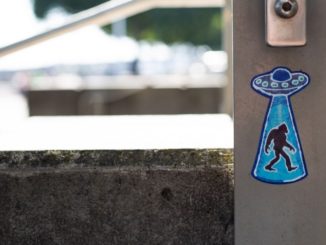
When the last shuttle launched in July, I watched the spectacle from the crest of an Atlantic wave. Six months earlier I had moved to Cocoa Beach, drawn by the romanticism of a shoeless lifestyle. And while I am proud to say I spent almost a year of my life surfing, not everything turned out the way I had planned. The loss of the shuttle program severely affected the job market, and I had to head back to my home state of Pennsylvania for employment.
Cocoa Beach, if you’re not familiar, is the town just south of Cape Canaveral and The Kennedy Space Center. Nearly all the engineers that NASA employs reside in Cocoa Beach, and their high-paying jobs are vital for the local economy. When it was announced that the Shuttle program was getting scrapped, the community panicked. In addition to relying on the robust salaries of NASA engineers, Cocoa Beach’s economy is geared toward tourists. When the Shuttle program was still in operation, it attracted millions of tourists to the coast every year. Many people felt that mothballing the fleet would devastate the town’s economy. And they were right.
Initially, NASA faced extreme criticism for retiring the Shuttle. Alarmists bemoaned that the move made America less competitive. These people cited the fact that Space presented an enormous range of economic possibilities. Whoever mastered space would inevitably master the planet. And China was dedicating an increasing amount of resources into space craft R&D. But NASA countered by arguing that the shuttle was an impractical vehicle. Its design had remained relatively unchanged since the 80s, and the agency thought it could do better.
So it was decided that U.S. astronauts would hitch rides to the International Space Station from China and Russia. The money NASA saved from scuttling the Shuttle would instead go to different areas. One of those areas was dedicated to designing a craft capable of long-term missions to Mars or an asteroid. The rest of the money issued grants to independent commercial space companies.
It seems 2012 is the year that these commercial space companies will finally begin transporting customers into space. Richard Branson’s Virgin Galactic, though not funded by NASA, is scheduled to take tourists into the heavens within the coming months. Of course, the first commercial flights to the final frontier are not cheap. It is reported that only the extremely wealthy will have the money for space adventures, as seats typically are listed around $200,000 a pop. Virgin maintains those prices will drop once initial costs of the project are paid. Other companies offer cheaper options, though the word ‘cheaper’ in this case is still pretty expensive. No company offers a deal cheaper than the price of a luxury car.
Meanwhile, NASA is keeping its promise and using the facilities at Kennedy to develop the next phase of space exploration. Partnering with Boeing, scientists are working on the next means of ferrying astronauts to and from the international space station. But the agency declared it did not intend to stick around in low-Earth orbit for long. The eventual goal of the program is to explore the outer regions of space. Mars and the asteroid belt are the intended targets.
Boeing is also using the Kennedy Facility as a hub for its commercial endeavors. The aerospace company has long recognized how well technology turns profits, and this new direction is sure to prove a success. Things are looking up for the Space Coast. This Pennsylvania winter is killing me. And I’m thinking my dreams of palm trees may be a sign that its time to head back down south.



